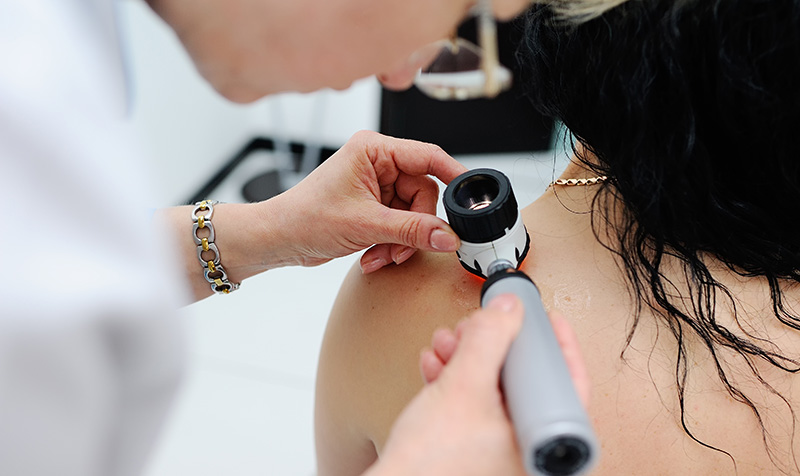Skin cancer is the most common form of cancer diagnosed in the United States. Annually, there are more than 5.4 million new cases of non-melanoma skin cancers. While there are fewer cases of melanoma, the incidence of this cancer is on the rise. Many of these cancers can be prevented by protecting skin from excessive sun exposure and avoiding indoor tanning. Read more about skin cancer prevention tips.
Risk factors
- Exposure to ultraviolet radiation from the sun or tanning beds
- Skin & hair color: People with fair skin, freckling or red or blond hair have a higher risk
- Moles: Certain types of moles and large number of moles increase a person’s chance of getting melanoma
- Age: Chances of being diagnosed with skin cancer increase with age
- Gender: Men have a higher risk of developing skin cancer than women
- Personal or family history of skin cancer
- History of sunburns especially at younger ages
Learn more about how to lower your risk of skin cancer.
Signs and Symptoms
These often appear when the disease is advanced.
- Asymmetry-half of the mole does not match the other half
- Border irregularity or edges which are ragged or notched
- Color is not the same all over; may be brown, blue, red, or white
- Diameter is wider than about . inch
- Evolving-mole continues to change in shape, color, size or doesn’t heal
Screening
Skin cancer screening starts with you. You should regularly examine your skin to notice changes. If changes are found that do not go away, you should contact your primary care physician or dermatologist for a professional assessment. When signs and symptoms of cancer are found early, it may be easier to treat and prevent complications.



